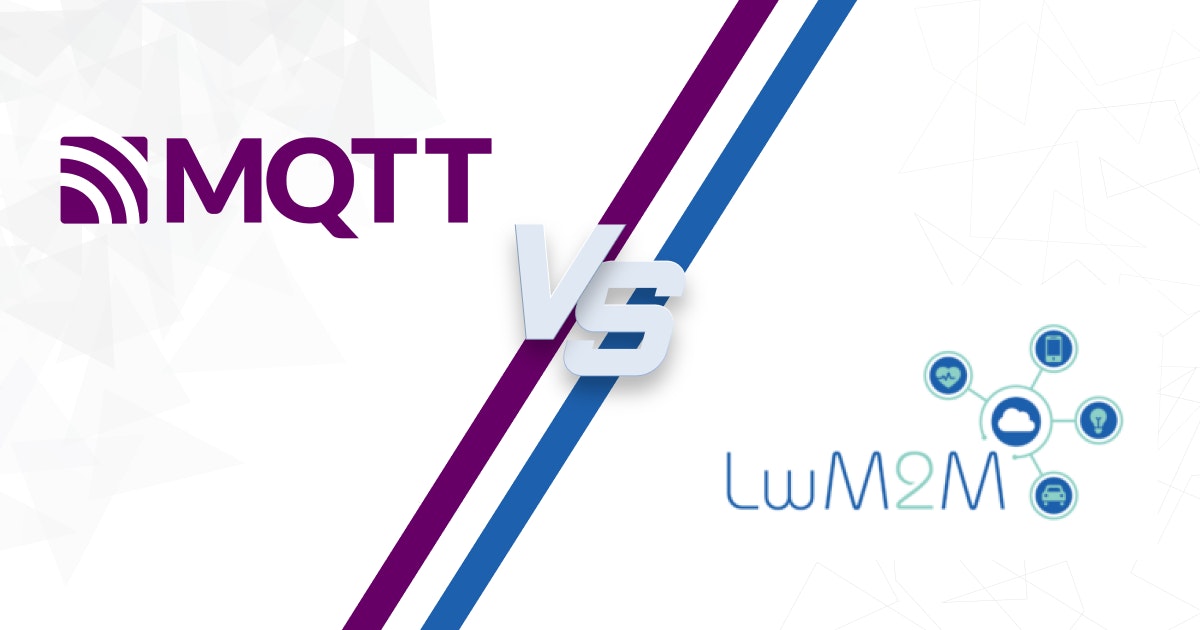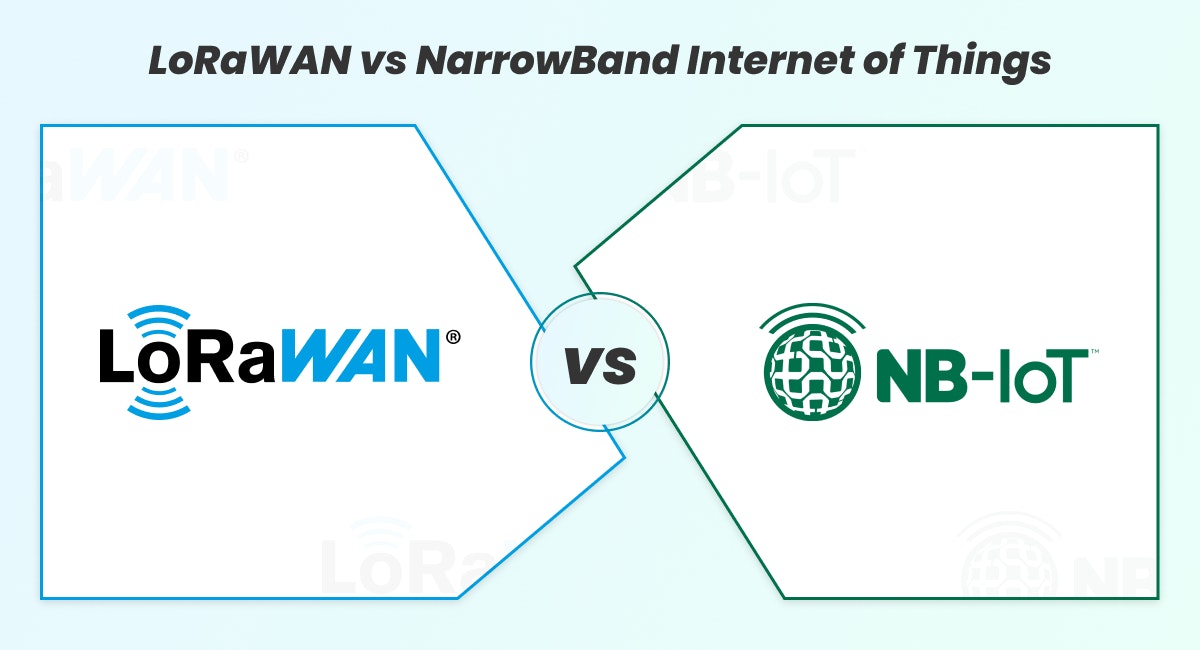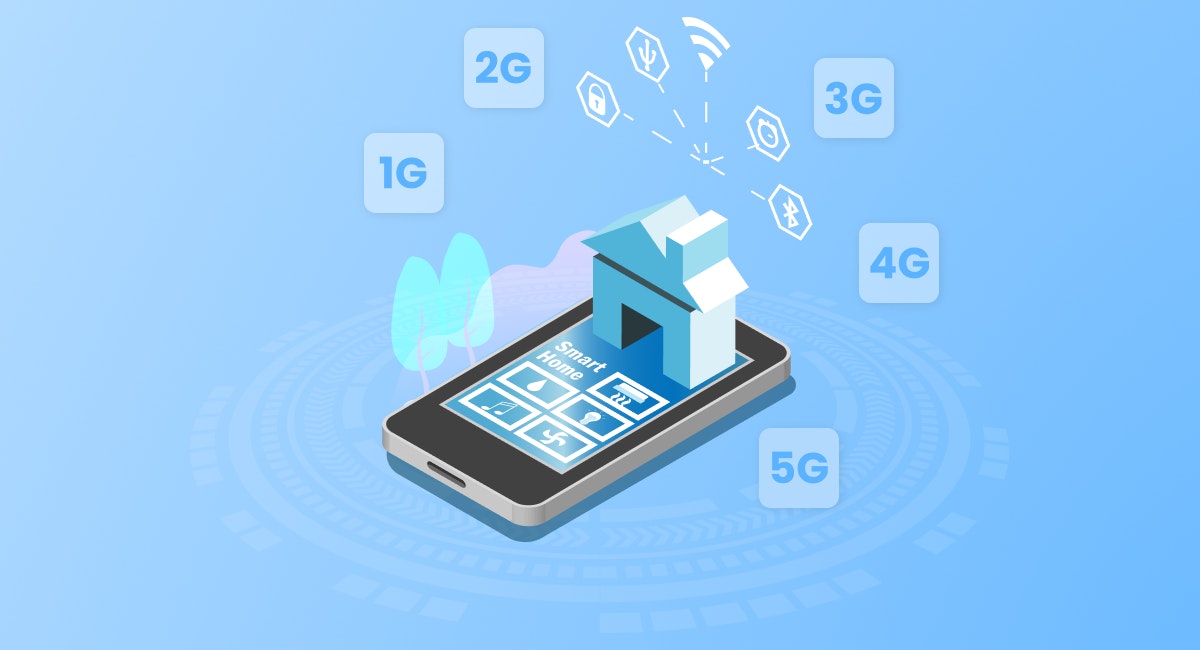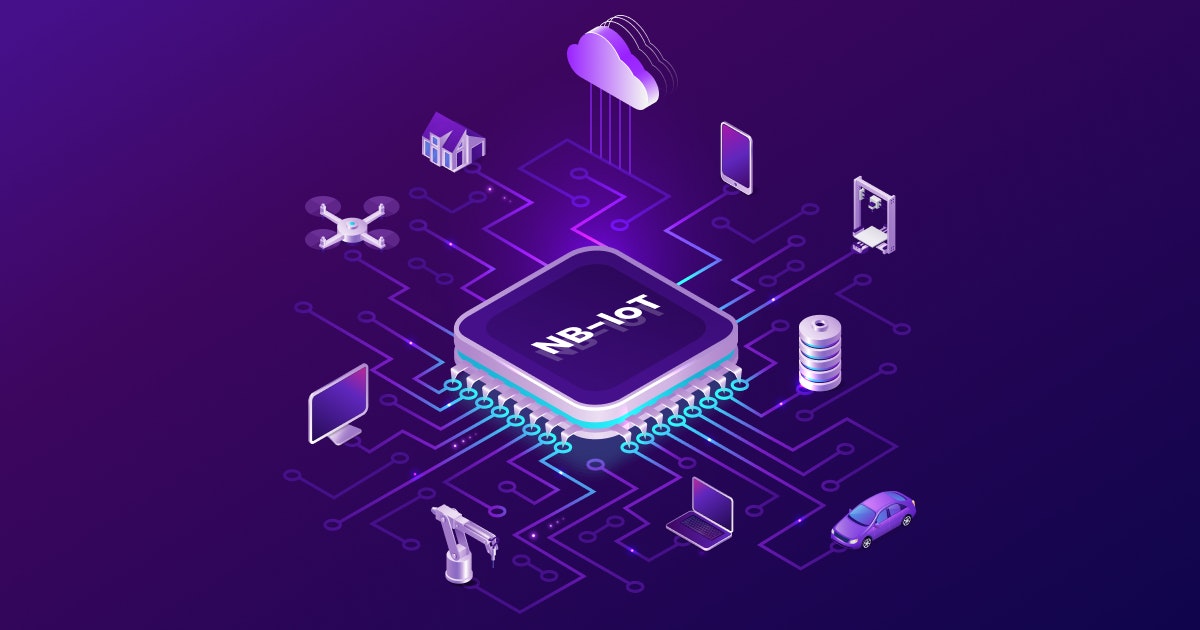Table of Content
Smart metering and product quality monitoring solutions to industrial automation environments and autonomous vehicles - these are examples of large-scale IoT deployments.
The IoT devices comprise sensors, gateways and modules, and are capable of sharing and receiving data. IoT protocols also form an essential part of the IoT technology stack as they enable the hardware for exchanging data meaningfully and in a structured fashion.
The concept of IoT and communication go hand-in-hand, and different elements come together to enable easy and smooth transmission and processing of data. While the programming languages form the core of IoT products, the protocols enable innovative communication.
Although there are multiple IoT protocols in the mix, two major options take the cake in the market, which are: LwM2M and MQTT.
What is the LwM2M protocol?
Lightweight M2M or LwM2M is a fast and structured session-based IoT protocol comprising an effective resource data model. LwM2M was developed by the Open Mobile Alliance, enabling the majority of IoT functionalities while maintaining device management capabilities on restricted solutions.
LwM2M is frequently applied with the Constrained Application Protocol (CoAP). It is known for providing a defined standard for IoT data communication and device management.
Functions of LwM2M
Enterprises rely on IoT data communication protocols for creating a definite way to transmit data from platforms, systems, and applications. It minimizes vendor lock-in by allowing cross-platform and cross-vendor data interoperability.
LwM2M also reduces the complexities of managing heterogeneous hardware installations, which can be a problem in case an issue arises. LwM2M is best used for the following activities:
- Complicated and long-term IoT deployments
- Installations with connectivity-constrained devices
- Solutions where an enterprise requires strict vendor lock-in
- Implementations with managed IoT devices or edge components, including IoT gateways
LwM2M regulates various standard objects, which when deployed within an LwM2M client offers a well-defined standard for data types for sensors, such as analog input/output, standardized temperature, and pressure.
LwM2M also takes care of other parameters such as firmware updates, remote device actions, connectivity monitoring, and on-device software management - a plus point!
Data messages follow an HTTP-like syntax with REST architecture, enabling less complicated integration between CoAP-supporting devices and RESTful API endpoints. LwM2M offers additional flexibility for network constrained devices that cannot support the UDP protocol.
Benefits of LwM2M
There are many reasons why you must incorporate LwM2M into your expansion plans for maximizing the advantages of IoT integration into hyperscale clouds for their customers. Here are a few:
1. Greater efficiency
LwM2M is much more efficient, and offers a simpler, full-stack set of IoT protocols, enabling simplified IoT deployment with less power consumption and heightened data optimization.
2. Smooth data transfer
LwM2M ensures 72% less data transfer at initial connection, and 31% less data transfer when dealing with a steady-state device connection. LwM2M gives the low-power wireless market access to voice capabilities.
3. Low power consumption
LwM2M enables businesses to opt for smaller, more affordable IoT devices that are versatile and dynamic because they use wireless connectivity and do not require hard-wired connection. The thing is, these smaller devices run on batteries, so there is no need for direct electricity connection.
4. Multi-industry usage
The LwM2M advantages are expected to drive the growth of the technology for connectivity in many sectors, including agriculture, manufacturing, automotive, smart home automation, and utilities.
5. Digital twin development
To model the physical world, you must first make sense of the physical world and model it as a digital twin. LwM2M also helps in building digital twins that help enterprises iterate and tweak tests as many times as it takes to get optimal and actionable results.
Best use cases of LwM2M
While LwM2M supports sending telemetry data, it was developed to standardize device management and provisioning. Here are the top use cases of LwM2M:
1. Error reporting from the devices is possible.
2. It ensures FOTA and SOTA for devices, making firmware updates a breeze!
3. It makes possible many device lifecycle functionalities, including “enable,” “disable,” and “updation.”
4. It enables headless device management, thus shipping the devices without configuring them at the manufacturing level.
5. It helps set APN and other features, such as cellular connectivity along with rebooting, activating, and disabling the device.
What is MQTT protocol?
Long for Message Queuing Telemetry Transport, MQTT is a lightweight, publish-subscribe, machine2machine network protocol, which was built for connecting devices in remote locations, having resource constraints or limited network bandwidth.
Because it is client-server based, MQTT can publish messages to a broker and receive messages by subscribing to a broker-related issue. MQTT enables data exchange between sensors, middleware, and IoT apps.
MQTT comes in handy for an event-driven and message-driven exchange between devices across networks. This protocol is often used for routing information between IoT devices with low bandwidth, memory, and power capacities.
Nearly all IoT platforms support MQTT communication, making it standard for device-to-platform IoT communication. You will find MQTT in smart home automation, SCM, manufacturing, and so on!
Functions of MQTT
If you are an enterprise that has many unmanaged devices producing high data volumes, you must use MQTT. It is necessary to have a proper device management solution that is directly available from the IoT platform vendor used by an enterprise. Modern versions of MQTT include end-to-end encryption for Transport Layer Security (TLS), session persistence, and Quality of Service (QoS).
Benefits of MQTT
MQTT is lightweight - just like LwM2M and it is apt for CPU-constrained systems. Besides being flexible, it delivers the following advantages to developers and enterprises:
1. Packet agnostic
Any type of data sets can be transmitted in the payload carried by the packet. The data can be either binary or text - something that is not a concern as long as the receiving party knows how to interpret the data adequately.
2. Market value
MQTT is a hot favorite when it comes to IoT applications. That is because it can send payload for low-power and constrained apps. MQTT brokers are known to be huge components of cloud-based IoT products.
3. Reliability
In MQTT, there are a few QoS options that can be used for guaranteeing delivery in IoT projects.
4. Scalability
The publish-subscribe model scales amazingly well in a power-efficient way. You will be surprised!
5. Time
A device can publish its data irrespective of the state of the subscribing server, which can connect and receive the data as and when it can.
MQTT vs. AMQP: IoT Protocols You Must Know About
Learn MoreUse cases of MQTT
Now that you understand the benefits and functions of this lightweight session-based IoT protocol, let us study the various use cases of MQTT:
1. Logistics
MQTT works wonders when it comes to connecting and monitoring vehicles in real-time. It supplements a standard supply chain management process.
2. Oil and gas
MQTT helps in monitoring oil pipelines. This is the use case this technology was first built for.
3. Manufacturing
MQTT is used for monitoring factory units, manufacturing parts, and industrial processes.
4. Urban mobility
When it comes to running city transportation systems and car sharing facilities, MQTT plays a significant role.
5. Consumer products
Because this protocol is often used for routing information between IoT devices with low bandwidth, memory, and power capacities, MQTT is an obvious choice for smart home appliances, home security tools, and at-home energy monitoring solutions.
LwM2M vs. MQTT: Top differences
Even though the two IoT communication protocols enable communication within an IoT ecosystem, there are certain differences between the two that you should know about. Let us have a look:
1. Purpose
The LwM2M is a service enablement and structured device management protocol based on CoAP request-response - the second layer in the CoAP abstraction layer.
On the other hand, MQTT is a client-server publish/subscribe messaging transport protocol that supports data and proprietary device management payloads in the IoT ecosystem.
2. Structure
LwM2M has a straightforward communication and data model comprising standard objects (IPSO, OMNA, GSMA) and structured core functions, including firmware/software updates, bootstrapping, diagnostics, remote device actions, and connectivity monitoring.
The arrangement makes LwM2M ideal for reporting, IoT analytics and device management. On the other hand, MQTT is completely platform-specific and vendor-oriented.
3. Interoperability
The combination of various constrained devices in an IoT ecosystem is on the rise. This has resulted in an increase in different vendors, offering sensors and devices over a single IoT deployment.
LwM2M performs well in this regard. However, such an integration is always a challenge when using MQTT for proprietary device management payloads in IoT.
4. Data processing times
LwM2M boasts of a more robust architecture. It performs better in terms of response time and keeps the bandwidth utilizing CoAP in check. That is why it does so well with constrained devices.
MQTT is known for data transfer, especially concerning one-to-many message distribution. This allows users to take necessary steps in real-time and that also proactively. Network architecture and system complexity play a huge role in IoT communication.
5. Transport and binding
LwM2M was built to operate various transport layers, including TCP, CIoT, UDP, LoRaWAN and non-IP data delivery. It can control and trigger sleepy devices over the supported binding transports.
MQTT is built to run over MQTT-SN and TCP/IP networks to provide bi-directional connection. However, it has yet to be widely adopted by the industry.
6. IoT systems architecture
LwM2M can be used for both resource-intensive and lightweight IoT-connected devices. On the other hand, MQTT is much preferred for its clear cut data and device management model that operates sensor networks with low-power capacity.
A Tabular Representation of the Differences Between LwM2M and MQTT
Similarities between LwM2M and MQTT
One of the biggest issues with running IoT systems is the availability of preferred IoT application vendors offering products with varying guidelines and compatibilities.
In an increasingly chaotic IoT landscape, standard protocols help exchange data between different sensors, gateways, modules and devices. Both LwM2M and MQTT are standard protocols that have gained prominence in IoT in the last few years and for a good reason.
They are both lightweight and easy to deploy, need minimal resources to run, and can also operate on small microcontrollers. They work well with low-power, resource-constrained devices. LwM2M and MQTT support bi-direction communication, easily connecting millions of IoT solutions in one go.
Which IoT standard protocol is best for your IoT project?
Well, there is no easy way to answer this question. So the discretion totally falls on you. Here is the thing - MQTT boasts of being in use for a longer period compared to LwM2M.
It has been widely used in agriculture, manufacturing, and telemetry markets. On the other hand, LwM2M is a new, state-of-the-art architecture built by IoT industry practitioners.
Despite the numerous dissimilarities we studied in the earlier sections, both protocols are well-suited to resource-constrained device management landscapes.
Come to think of it - MQTT is a great match for IoT solutions with variable system components and where loose coupling, protocol convergences, and auto discovery are not preferred to be made a priority.
That is where LwM2M makes up. It has a well-defined object model and efficient architecture. It is a perfect choice for more complicated and large-scale IoT applications involving heterogeneous hardware deployments.
In addition, if you want to avoid vendor lock-in and enjoy project interoperability, LwM2M is definitely a better option. But if you are okay spending the entire project with a single vendor, minimize the hassle with MQTT.
Similarly, LwM2M provides instant deployment capabilities. On the other hand, MQTT cannot function unless there is a device language in place for every project separately. This significantly affects the project’s time to market.
If your IoT device requires a higher payload of data to be sent, MQTT is an ideal option. However, if you are looking to monitor critical device statuses or issues, you might want to go ahead with something as lightweight as LwM2M.
Moreover, if you are hosting and managing your cloud apps, use LwM2M for device management and build your MQTT broker for messaging.
LoRaWAN vs Narrowband Internet of Things – Explained
Read NowOver to you
So you can see both protocols are designed to serve different purposes. The choice between the two standard IoT protocols depends on what you are seeking to achieve with your IoT project. However, if you are looking for a helping hand and want expert advice on which is the best IoT protocol for your IoT app development, you can totally count on Intuz.
We have a superlative team of knowledgeable developers who have experience working on both standard IoT protocols and diverse industry verticals. Whatever you need, we can find a solution. All you have to do is
fill the contact form for us so we can connect with you at the earliest.





